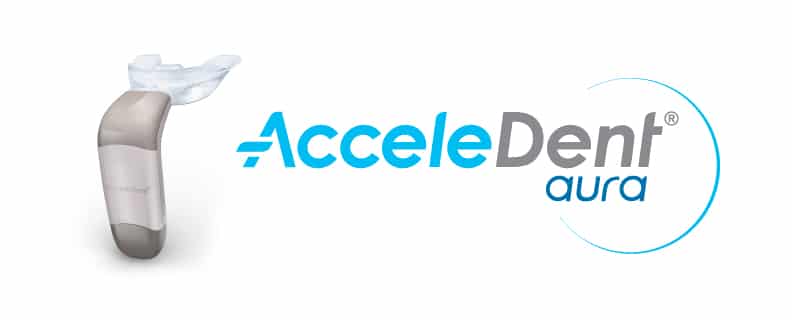Braces
Metal Braces
Metal braces are the most common type. They are made of high-grade stainless steel. Today’s metal braces are smaller, more comfortable, more attractive and most durable.
Clear Braces
Our clear braces (brackets) are made of translucent ceramic-porcelain material that does not stain. They are most popular with patients due to their cosmetic appeal.
Self Ligating Braces
The self ligating brackets utilizes (sliding-door) technology known as “self-ligation” that allows the wire to slide back and forth within the bracket.
No elastic or steel ties are used with these brackets. This technology creates less friction and results in greater comfort for the patient. In addition they often reduce both treatment time and the number of adjustments that are usually performed.
Accelendent Aura

Faster Treatment. Better Results. Affordable Monthly Payments.
New AcceleDent Aura complements your orthodontic treatment. This device may accelerate your tooth movement up to 50%!
How does Accelendent work?
By inserting the Mouthpiece — fitted around your existing orthodontics — and turning on the Activator for 20 minutes every day, AcceleDent Aura can speed up tooth movement by using SoftPulse Technology™. Faster tooth movement may decrease the duration of your orthodontic treatment and can even help to make your orthodontics more comfortable.
The Benefits of Acceledent Will Make You Smile!
- You’ll accelerate your orthodontic experience without sacrificing aesthetics
- AcceleDent can be used for adolescents, teens, and adults, and it is completely safe for patients of all ages.
- The AcceleDent appliance is lightweight and comfortable. You may even forget you’re using it!
- The hands-free design allows you to achieve a beautiful, straight smile faster than you ever thought possible – even while reading, watching television, listening to music, or doing school work.


